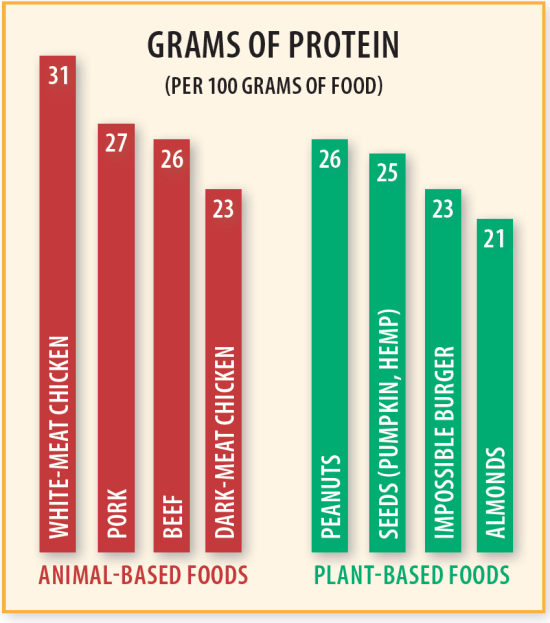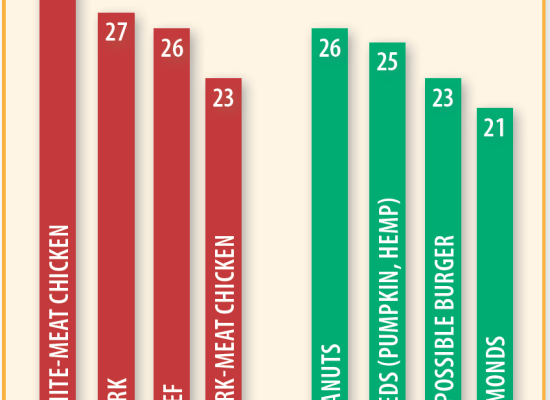Understanding the Vegan Diet
More people are buying plant-based foods than ever before, including during the pandemic. Sales of plant-based foods in the United States increased by a whopping 90 percent during the height of the pandemic-buying frenzy in March of last year. Even tofu and tempeh, two well-known products among vegetarians and vegans, experienced a hefty spike in sales growth.
Defining Veganism
The term “vegan” is derived from the first and last letters of vegetarian. The diet is purely plant-based. That’s in contrast to vegetarians, who may eat dairy and egg products. For some people, veganism is also a philosophical lifestyle choice which seeks to exclude exploitation of, and cruelty to, animals for food, clothing, or any other purpose.
Senior dietitian at UCLA Medical Center and Adjunct Assistant Professor at the UCLA Fielding School of Public Health Dana Ellis Hunnes, PhD, MPH, RD, is a longtime proponent of the vegan diet for both people and the planet.
“The benefits of the diet include lowering the risk of, preventing, and even reversing a wide range of nutrition-related chronic diseases, such as heart disease, stroke, diabetes, kidney disease, obesity, and certain cancers,” says Hunnes. “There are also many environmental benefits, including the reduction of water use and greenhouse gases produced from the agriculture sector, and protecting oceans by leaving oceanic habitats intact.”

Myths and Realities
Misconceptions about the vegan diet are many, including:
- Nutrient deficiencies are extensive. “With careful planning and understanding of nutrient quality, you can obtain every nutrient you need from a vegan diet,” says Hunnes. However, as vitamin B12 is most readily found in animal-based foods, you may need a supplement. Many vegan food products also are fortified with it.
- The diet is bland and boring. Many vegan recipes feature herbs and spices galore that make vegan food absolutely delicious, often more so than a typical American diet.
- I’ll starve eating only plants. If you are eating whole-foods (rather than processed), you can eat a ton of food and not feel hungry at all, according to Hunnes. And you may not have to count calories to maintain a healthy weight.
- There is not enough protein in plants. You can get more than enough protein on a plant-based diet. Most of us do not need nearly as much protein as we think we do, says Hunnes. “A generally healthy 140-pound female only requires 50-65 grams of protein per day, while a generally healthy 180-pound male only requires 65-80 grams of protein per day.”
Hunnes does caution that some medical conditions may require more or less protein, and it’s best to consult with a physician or registered dietitian to guide you on how much protein you may need.
Getting Started with Smart Swaps
Eating more plants is a healthy choice, regardless of whether or not you choose to fully adopt veganism. Start by adding more whole plant foods to your diet, including pulses, soy foods, whole grains, nuts, seeds, vegetables, and fruits. Pulses are a category of legume that includes a variety of beans (e.g., kidney, pinto, and black beans), peas, and lentils. Limit your intake of prepared foods, fast foods, and sweets. French fries and sugary desserts may be vegan, but they are high in calories and low in nutrients.
Smart swaps include substituting plant-based milks (almond, cashew, soy, rice) for cow’s milk, plant-based burgers, and avocado in place of butter. Another way to ease into vegan eating is to dedicate a meal (e.g., all breakfasts) or to choose a day of the week to go vegan. The Meatless Mondays campaign (mondaycampaigns.org) offers a wealth of resources and delicious recipes to support a plant-based journey.
The post Understanding the Vegan Diet appeared first on University Health News.


